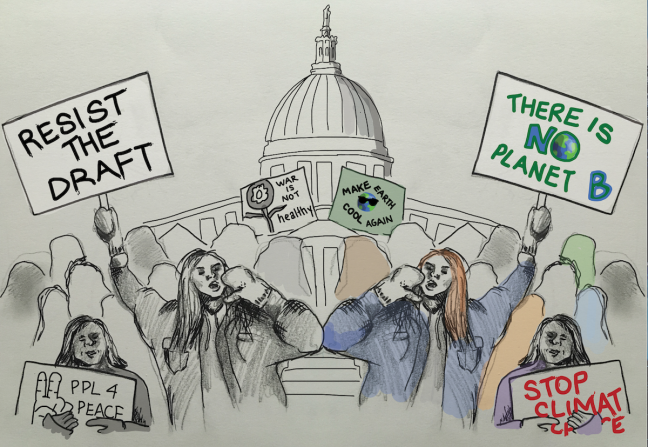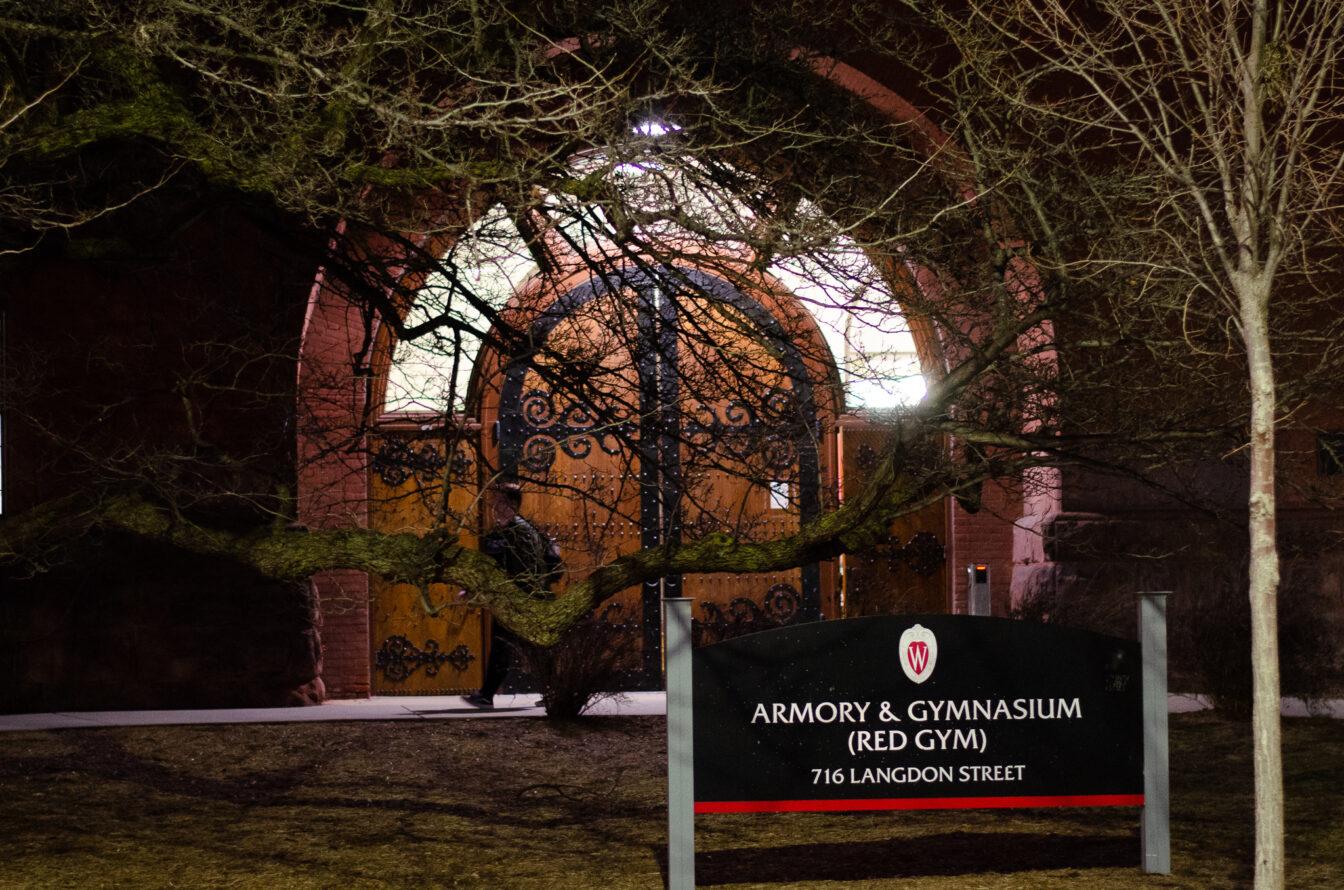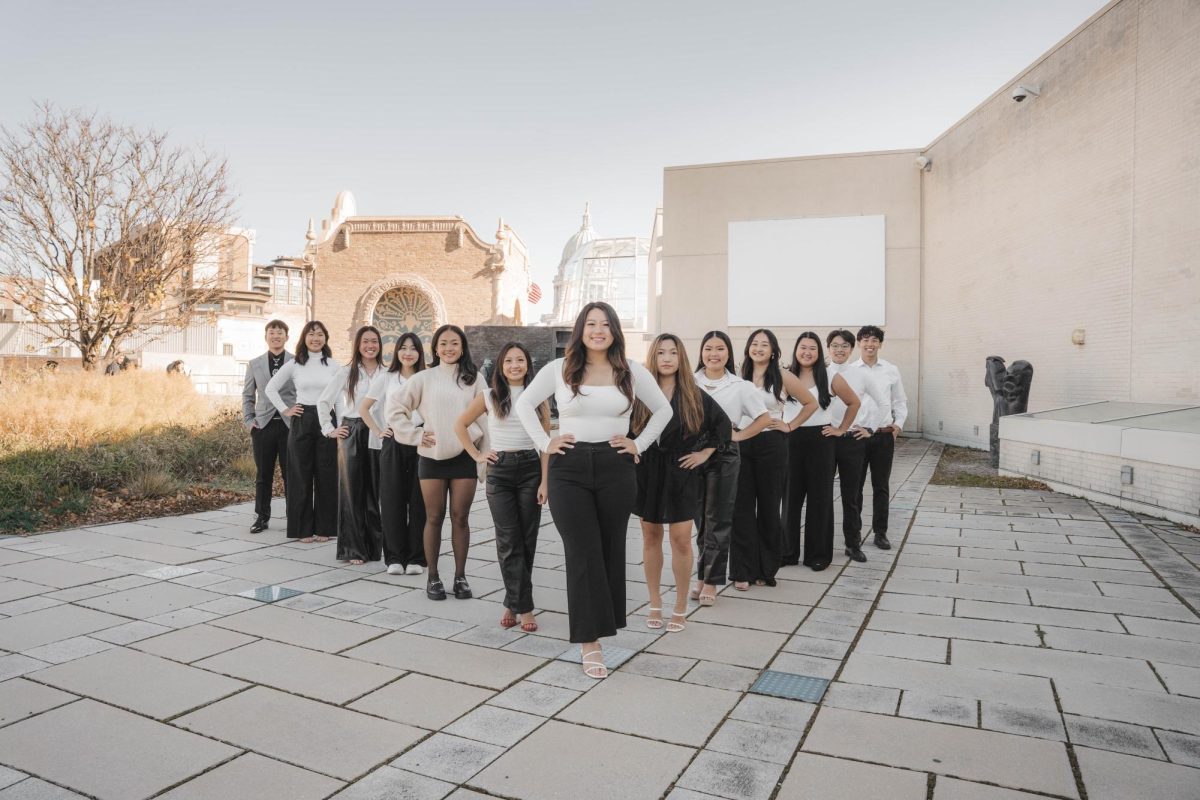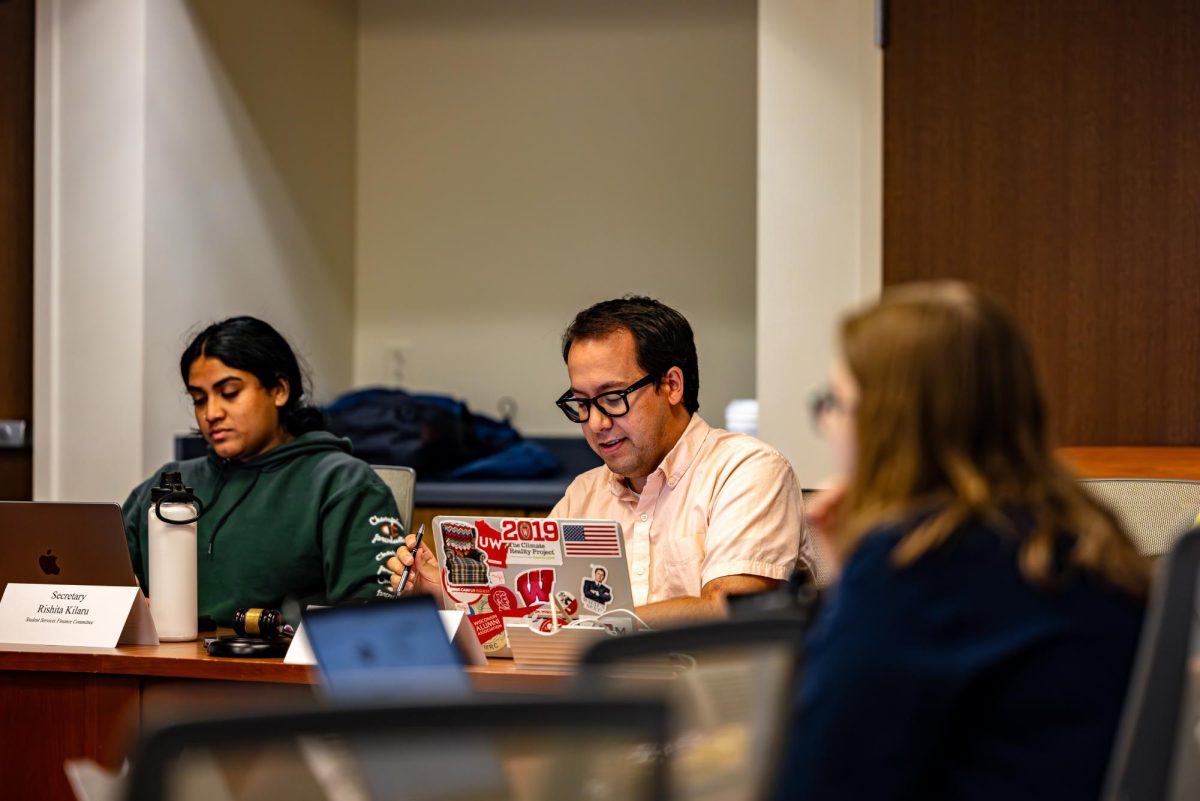At the first Mifflin block party 50 years ago, University of Wisconsin students came together in protest. Even as tensions between the Madison Police Department and UW students were heightened after a tumultuous confrontation during the 1967 Dow Chemical protests just a few years earlier, the cycle of rigorous youth activism remained unbroken.
For students, it was a time to dance in the streets. But for police officers, it was time to get revenge, local historian Stu Levitan said.
What started as a “noise complaint” triggered a confrontation between Mifflin attendees and police in riot gear — complete with face masks, billy clubs, vests and tear gas canisters.
What co-founder of the Young, Gifted and Black Coalition Matthew Braunginn called the “youthful energy” and “reckless mindset” of activists became apparent at the Mifflin party-turned-protest. Young people retaliated against the police with rocks, bottles and bricks.
But Braunginn added that even today where there’s progress, there’s also pushback.

Courtesy of UW Archives
Nothing new
President Donald Trump signed an executive order in March requiring colleges to protect free speech on campus or risk losing federal research funding. The executive order was issued in response to the increasingly frequent protests of conservative speakers on college campuses, the Associated Press reported.
Two years earlier, the UW System Board of Regents passed a “Commitment to Academic Freedom and Freedom of Expression” policy, which strongly upholds the expectations assigned in Trump’s order.
Under the policy, a student who has been found to disrupt free expression twice faces suspension. A third offense could lead to expulsion, according to the UW System protest guidelines.
UW spokesperson Meredith McGlone said in an email to The Badger Herald that protesters at UW are held accountable for disrupting events or speakers, regardless of the viewpoint they express.
“Our campus has long been known for free and vigorous debate — the ‘fearless sifting and winnowing by which alone the truth can be found,’ as the plaque on Bascom Hall reads,” McGlone said. “We support the right to free expression while simultaneously taking appropriate steps to keep our community safe.”
However, this debate is nothing new, Levitan said.
In 1965, former Republican Gov. Warren Knowles, with the support of his newly appointed Republican regents, restricted protest culture heavily, Levitan said. This includes restrictions on protest equipment and curfews — even a student convicted for a misdemeanor after obstructing university activities could be suspended for a semester.
“This whole debate that we’re having today about students disrupting speakers or disrupting classes, we had this whole debate 50 years ago — and the students lost,” Levitan said.
But Levitan believes activism — regardless of its consequences — follows a common progression: first protest, followed by disapproval from those in power, then resistance from the activists, next pushback and finally further escalation of the issue.

Reckless mindset, pushback then escalation
Black activism has historically seen pushback when progress has been made, Braunginn said. One example is Reconstruction as the progress, with the prevalence of Jim Crow laws being the pushback.
“It’s a constant battle, but the condition has to be really dedicated youth that are thinking beyond themselves,” Braunginn said.
He added that the youthful energy arising after a failure of leadership has led to real social change, from the Civil Rights Movement to today’s fight against climate change.
But even one of the most successful youth activist movements, like the Civil Rights Movement, prompted severe consequences. Students got hurt and sometimes killed, whereas today they’re more likely to face suspension or expulsion instead.
This whole debate that we’re having today about students disrupting speakers or disrupting classes, we had this whole debate 50 years ago — and the students lost.
“You are fighting for your right to exist as a full human being,” Braunginn said. “That consequence of being expelled versus your right to be a full human to me is not really a choice.”
For Braunginn, the “urgency of now” takes precedence over danger for young people, which makes them some of the strongest activists — especially because many youth involved in activism are usually those who are oppressed, marginalized or most impacted in some way.
While fighting for humanity is the real choice, Braunginn said youth activists might reconsider their tactics in response to consequences. When it comes to Young Gifted and Black, their goal is to take back power through disruptive protests in the legacy of the Civil Rights Movement.

Real change takes time
But while youth activists of yesterday and today face severe consequences, sometimes sustaining a movement under the weight of the university system can hinder its ability to generate change.
Co-president of Students for Justice in Palestine Zahiah Hammad first joined the organization as a freshman. Two years prior, SJP members had been preparing a movement demanding the university divest from companies that contribute to human rights violations.
As a freshman, Hammad and the rest of SJP joined the Black Student Union, MEChA, Wunk Sheek and other interested students in proposing a divestment resolution to the Associated Students of Madison.
In just 24 hours, they were met with backlash from various student organizations on campus, as well as on social media.
After revisions were made, ASM eventually voted on the resolution. This time, Hammad said, Chancellor Rebecca Blank released a statement asserting that ASM does not have the power to divest from companies the university does business with.
Two years later, as SJP co-president, Hammad is working to confront these companies at a more internal level — a process that is proving to be just as difficult.
“As much as we can make noise on campus and build solidarity and bring more attention to [divestment], actual action is something that is really hard to do unless you are able to change basically how the university is set up,” Hammad said.
Overall, Hammad views youth activism and its ability to create lasting change in a positive light. She is inspired by the increase in youth activism today as it pertains to the aftermath of the 2016 presidential election.
Similar to the lengthy process required for ASM to approve the divestment resolution, Hammad said real change resulting from activism takes time.
“It’s helping create this population of people that are one day going to grow up,” Hammad said. “Hopefully that generation and that group of people are going to be the ones … to make that action that they are active about happen.”

Lasting change
Megan Miller, the Morgridge Center for Public Service assistant director for civic engagement and communications, said there’s a need to build a lasting commitment to civic engagement in the student body
The Morgridge Center utilizes a framework developed by Stanford University called the pathways of public service to foster civic engagement on campus. One of those pathways is community organizing and activism, Miller said.
“What I really like about that framework is that it highlights the interdependence between these different ways of being involved in the community,” Miller said. “When we’re thinking about lasting social change, activism plays an important role in that.”
Along with the other pathways — community-based research, policy and governance, philanthropy, direct service and social responsibility — Miller said lasting social change has generally involved a variety of routes as opposed to just activism.
Miller added that lasting social change often takes more time than students have at UW. So, the Morgridge Center focuses on supporting long-term, existing organizations and projects by connecting students with them during their college experience.
“That helps create lasting social change — helping [students] think about how their work contributes to a broader movement, or something that’s larger than their time on campus,” Miller said.
At the university level, students are actively representing themselves and their own ideas too by way of ASM, ASM Chair Laura Downer said.
ASM’s shared governance system is unique to most student councils in that it gives students decision-making power at the policy level, Downer said. ASM campaign-based committees are also a form of student activism, she added.
“Everyone that’s involved in ASM, and especially the leadership of ASM, has a fairly active role in advocating for students directly to administrators,” Downer said. “The greatest thing I’ve learned is how to plan campaigns and how to thinking through tactics and strategies.”
Are we going to let others decide our future, or are we going to grab it? Power isn’t given away, it’s taken — and we have to take our power.
By getting students involved from their freshman year until graduation, Downer said they are able to make sustainable, long-term decisions with the help of full-time staff.
As involved as ASM is in the systemic decisions made at UW, Downer said they still face limitations. Some shared governance committees don’t receive enough respect from the departments they work with. Downer said they’re often attacked from the state level, too.
Additionally, while ASM prides itself on being a nonpartisan organization, Downer added that sometimes their nonpartisan stance keeps them from addressing certain issues students feel strongly about.
While ASM voted to pass the divestment resolution SJP and other student organizations brought forward, Downer — who was not involved during that time — added that this was an instance in which the issue did not fall under ASM’s institutional scope.
“Being exposed to ASM but not involved in that conversation gave me a unique and healthy perspective on what the purpose of student government should be,” Downer said. “Institutional reflection on who we are and what we should do … has definitely influenced leaders.”

Up for grabs
This reflection spans across youth activists from a variety of movements — especially after the 2016 presidential election, Hammad said.
For Hammad, it’s possible this recent resurgence of youth activist movements could be attributed to pushback of progress prompted by Trump’s election.
Such resistance may lead to higher voter turnout and increased criticism of political candidates, Hammad added. Already, political candidates are visiting places like Madison — a so-called “liberal bubble” — because they see a new culture of activism here, Hammad said.
Considering millennials are the largest voting bloc, Braunginn said the power stemming from those younger than 35 years old could entirely re-shape the nation. Unfortunately, this age group votes least often.
“We are outvoted at every level, yet we wouldn’t let our grandparents decide our outfits for the day,” Braunginn said. “Why are we letting them decide our future?”
For Braunginn, activism is important because potential political candidates start to pay more attention to youth voters.
Hammad said she has seen an increase in youth activism at UW, and her cohorts are responding to it well.
Braunginn urged youth activists — even those who are apathetic to voting — to vote, get involved in the political process and better shape the conversation.
“Are we going to let others decide our future, or are we going to grab it?” Braunginn asked. “Power isn’t given away, it’s taken — and we have to take our power.”




















